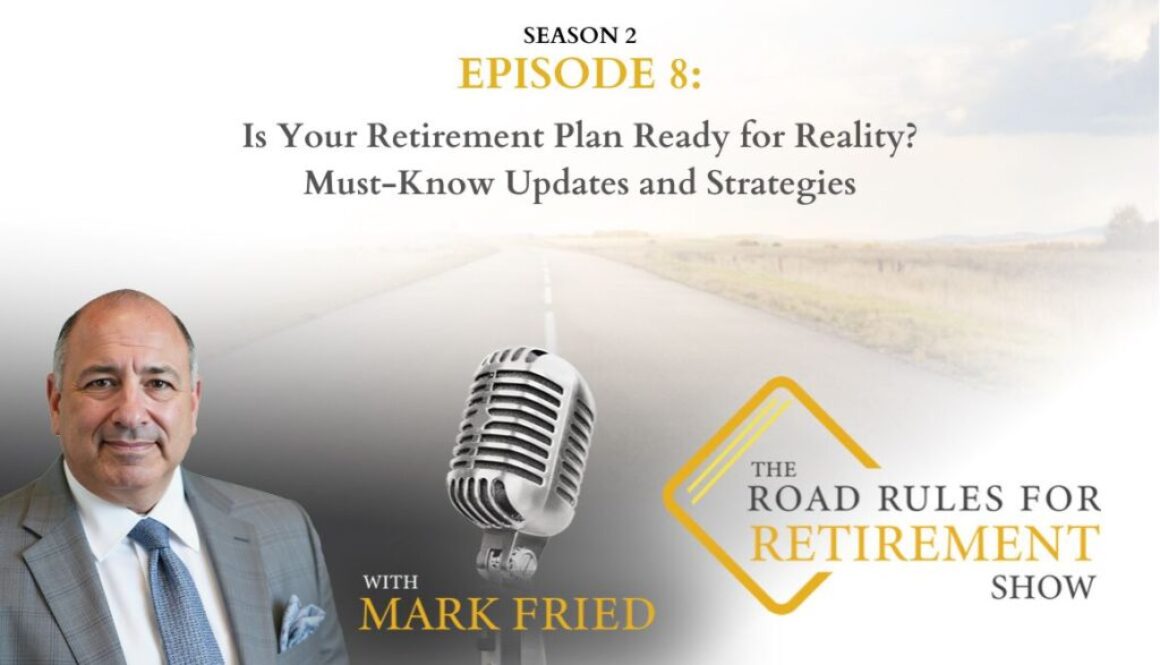S2E8: Is Your Retirement Plan Ready for Reality? Must-Know Updates and Strategies
In this episode of the Road Rules for Retirement Show, host Mark Fried shares essential insights on the top five retirement planning mistakes that can derail even the most diligent savers. Whether you’re just starting to think about retirement or already transitioning into this new phase of life, this episode is packed with practical advice and proven strategies to help protect your hard-earned savings and build a confident financial future.
Mark explains why having a plan isn’t enough—you need to keep it updated and flexible to adapt to market changes, tax laws, healthcare needs, and personal circumstances. He discusses the real cost of retirement, how to avoid overspending, and the psychological shifts many retirees face. You’ll also learn the difference between owning a retirement account and having a true retirement strategy—and why that distinction matters more than you might think.
With decades of experience guiding clients through retirement, Mark emphasizes the value of working with an advisor who not only manages money but also helps align your finances with your goals, values, and lifestyle.
If you’re serious about maximizing your retirement income, minimizing financial stress, and avoiding common pitfalls, this episode is a must-listen.
Special Offer:
Ready to take control of your retirement? Enroll in Mark Fried’s Retirement Masterclass to build your own customized financial roadmap. Visit WhenCanIRetire.us and use coupon code RRFR2024 for a special discount.
Why Listen?
If you’re nearing retirement or already retired, this episode offers actionable advice to help you protect your savings, manage taxes, and ensure your money lasts. Tune in now and start building the retirement plan you deserve!
Connect with Mark Fried:
https://plansmartandretirewell.com/
https://www.linkedin.com/in/mark-fried-a0b1156/





